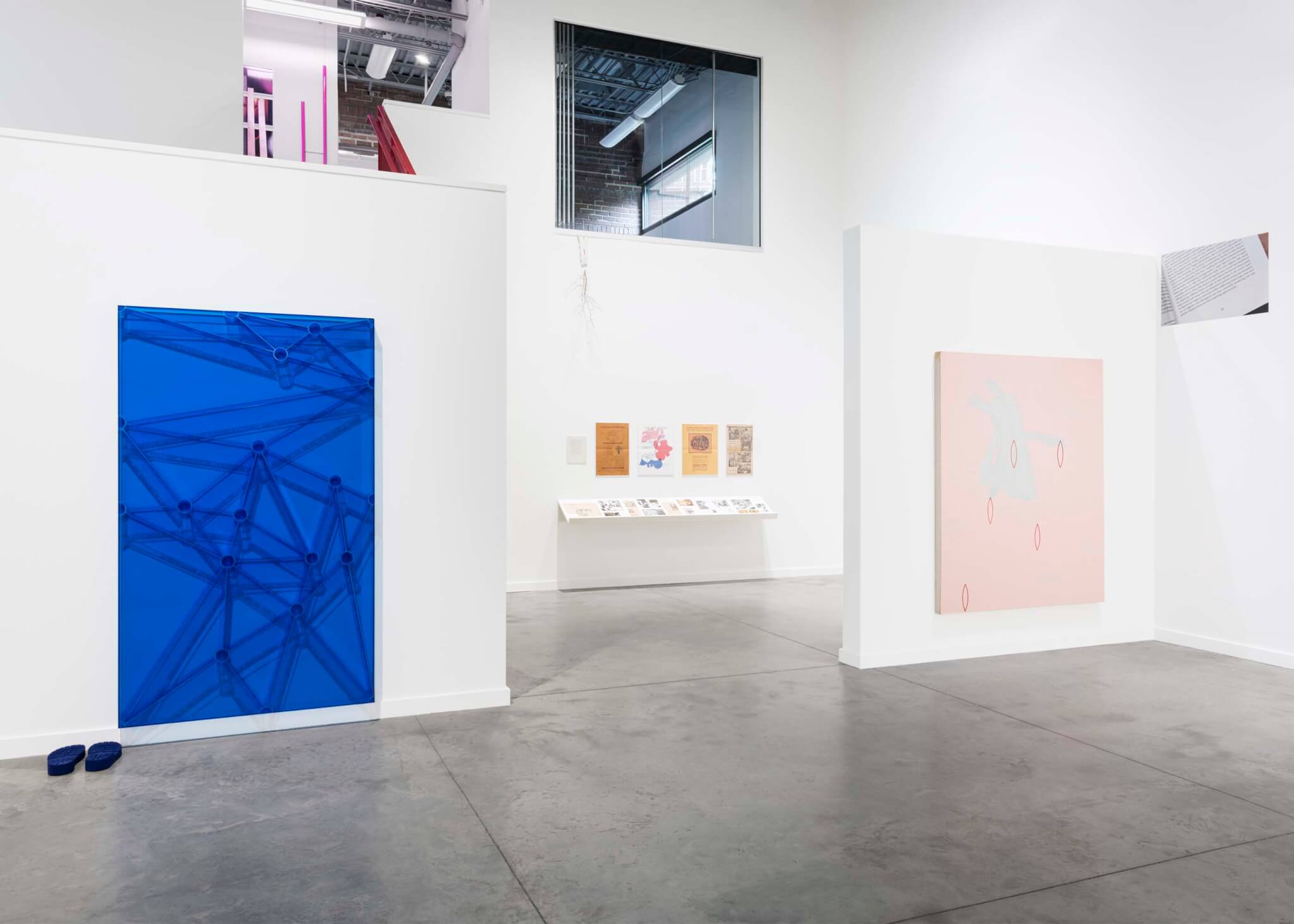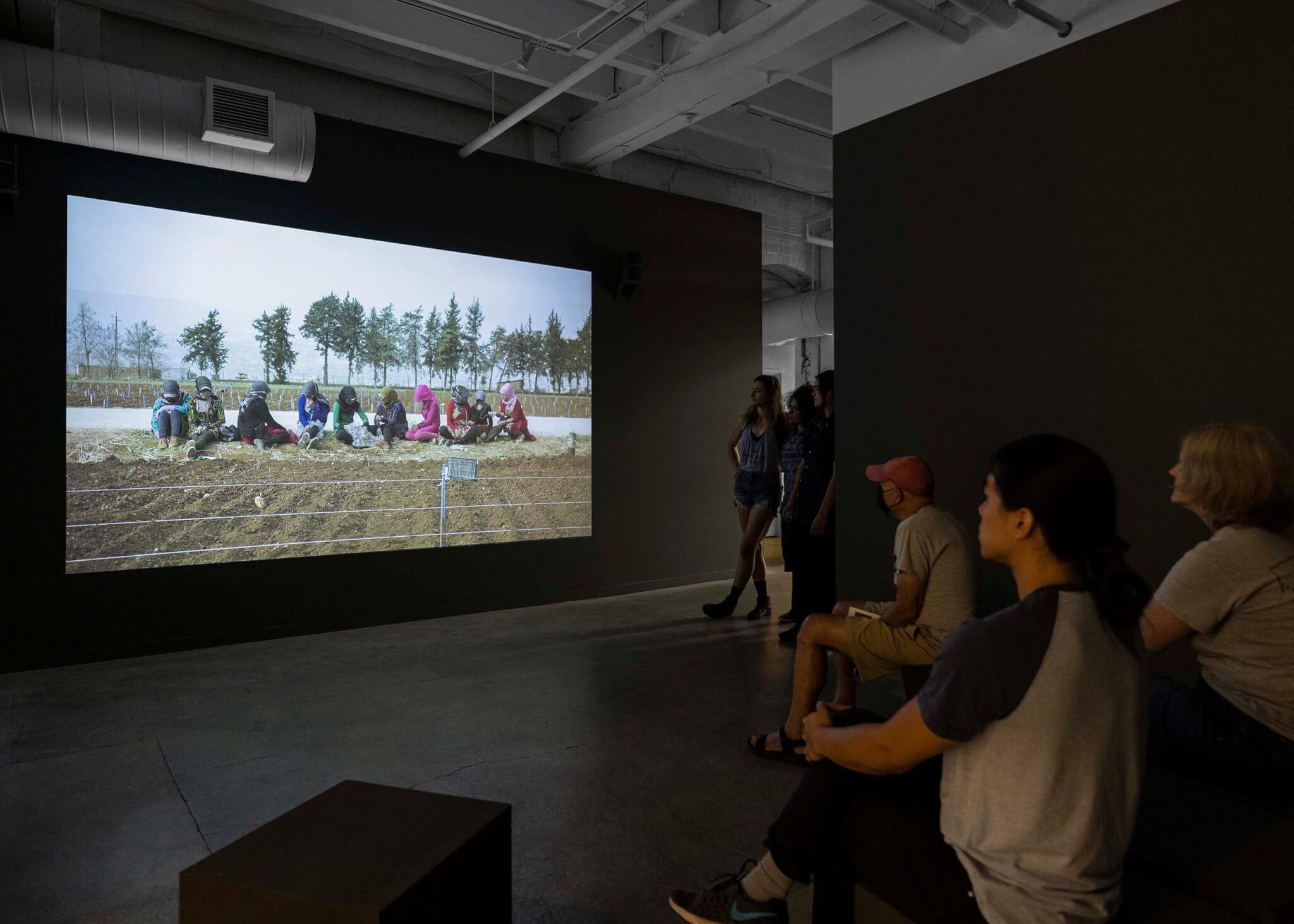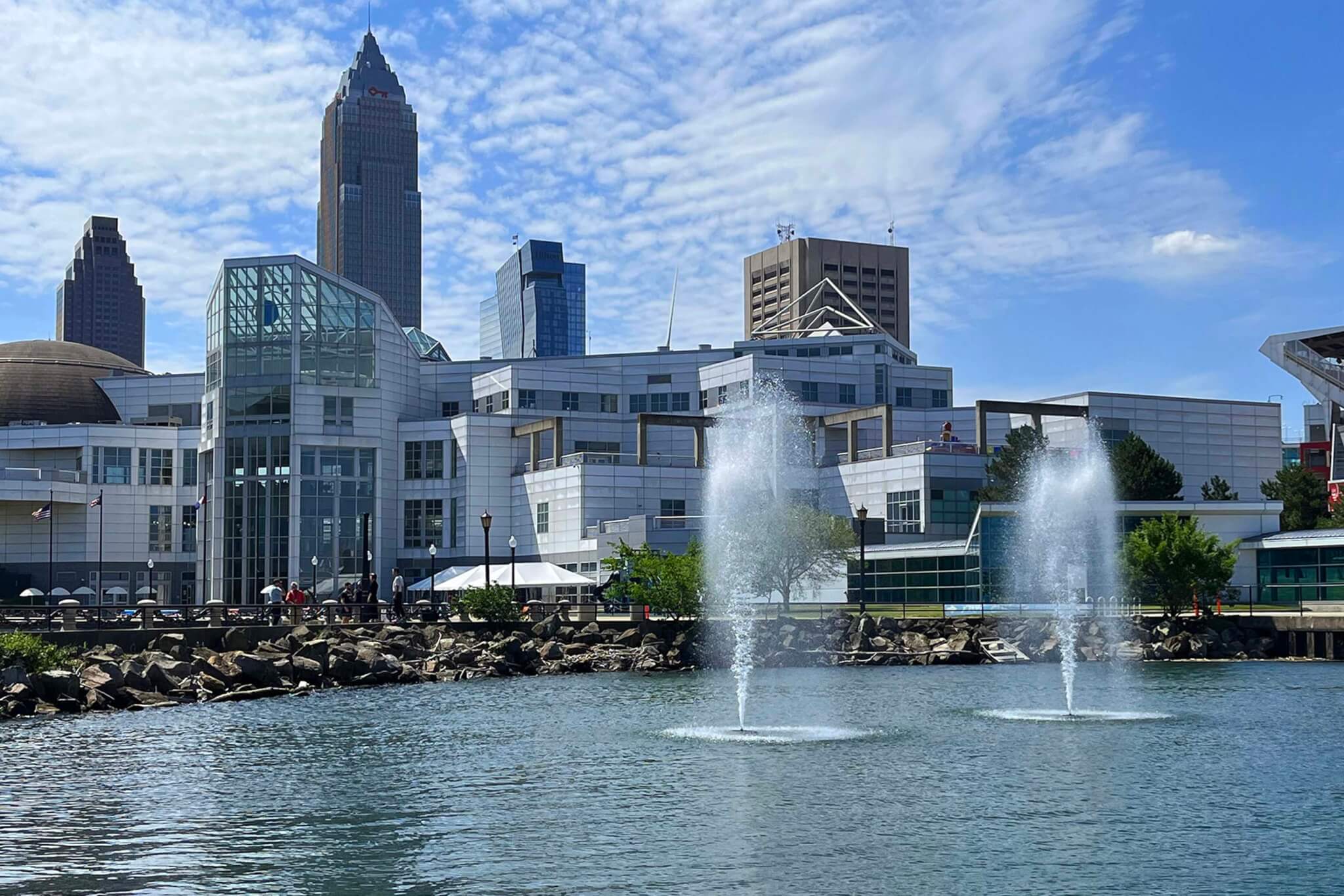Across northeastern Ohio, Front 2022 stages a triennial that explores how art can heal us
Oh, Gods of Dust and Rainbows
Front International 2022
Cleveland Triennial for Contemporary Art
Open through October 2
The intended springboard exhibition venue for Front 2022 is Transformer Station, an electrical plant turned art gallery in Cleveland’s Ohio City neighborhood, the birthplace of Cleveland’s LGBT civil rights movement and a historic refuge for queer culture. Following An American City, the inaugural 2018 edition of Front, this year’s edition, curated by Tina Kukielski and Prem Krishnamurthy, is a prescient reflection on themes of loss and healing, though its planning was underway before the pandemic. Its title—Oh, Gods of Dust and Rainbows—borrows from the opening lines of Langston Hughes’s 1957 poem “Two Somewhat Different Epigrams” and resonates with the rainbow-colored streets surrounding the appealingly stoic exhibition venue.
Northeast Ohio has been deeply impacted by the pandemic, inequality, and climate change. And while these issues have generally galvanized art and architectural discourse with a charged sense of urgency, they have also caused doubt in the agency of these disciplines, even for Krishnamurthy; yet, these anxieties melt away in the optimism of Oh, Gods of Dust and Rainbows. Throughout the work of its 100 artists installed across 30 exhibition venues in Cleveland, Akron, and Oberlin, Front is a moment of pause—a slow reflection on the scars left by the pandemic and social unrest.

Front 2022 is incredibly ambitious. It’s stated mission is to make Cleveland “one of the most important world destinations for arts and culture.” Front 2018 bolstered the regional arts economy, leading some to speculate that the city may be “the next Venice.” Transformer Station was acquired in 2011 by millionaire collector and former advertising executive Fred Bidwell, and its opening in 2013 helped ignite a wave of gentrification in the neighborhood. In 2018, Bidwell stated the premise of Front followed from a question about his project for Transformer Station: If it “could bring people into a neighborhood, could a bigger one bring people into the city?” He at first estimated 15,000 visitors would attend. Overall, 90,000 participated, generating $31 million in economic activity.
The first artworks displayed in Transformer Station are three archival reproductions of Hughes’s poem showing his process as one of revision and transformation; they stand across from an enlarged reproduction of Charles Eames’s diagram for the 1969 exhibition What is Design? at the Musée des Arts Décoratifs in Paris. This diagram shows design as a triangulation between the varied interests of designers, clients, and society at large. The implied conversation between these two works is a curatorial preface to Front 2022’s theme of the potential for art to be transformative at various scales, from processing personal trauma to reimagining the power structures that govern contemporary life.
Stepping into the main gallery, one is engulfed with the audio of On Kawara’s monumental One Million Years. Between 1969 and 1999, Kawara wrote twenty-four sets of ten calendar binders; twelve span one million years into the future and the other twelve extend one million years into the past. In 1993, he began recording live readings of these calendars with paired readers reciting the text in sequence. As I viewed the work throughout the gallery, the audio made me recall that, earlier this year, the U.S. surpassed one million lives lost to the pandemic.

Archival materials related to Cleveland’s Art Therapy Studio, the country’s longest-running independent art therapy center, are viewable nearby. The studio was founded in 1967 for people to engage with art as a tool for healing and, to this day, provides therapeutic art workshops for thousands of people throughout the region. As part of Front, Art Therapy Studio is hosting a series of these workshops to help build community among local artists. Close by, a table full of books with subject matter ranging from using the brain’s neuroplasticity to heal psychological trauma to climate change as a social crisis of imagination further Front’s curatorial intent to surpass the display of art as a representational object and to use art as a resource for healing.

The nearby SPACES gallery in Ohio City engages with environmental restoration through a group exhibition that probes the planetary effects of ecological degradation caused by industrial production and war. It screens Jumana Manna’s film Wild Relatives (2018), which follows the multitude of stakeholders involved in repatriating native Lebanese plants that were destroyed in the Syrian civil war using seeds from the Svalbard Global Seed Vault. Several of Manna’s collages which depict idyllic landscapes made from fragments of household chemical cleaner labels are also on view.
This juxtaposition between chemicals and landscapes is reiterated in the work of London-based art collective Cooking Sections. They partnered with local farmers to address the appearance of toxic algal blooms and hypoxia in Lake Erie caused by agrochemical runoff. The project, To Those Who Nourish (2022), consists of dual aerating fountains in the North Coast Harbor. For the 2025 triennial, they are forming a network of farmers’ co-ops to help mitigate and raise awareness about agrochemicals by experimenting with alternative farming practices.
While Front 2018 was criticized for having almost no projects representing local people or the problems they face, Front 2022 has numerous local contributors making work that speaks to many local problems, but with one glaring omission. In 2019, Cleveland ranked first among large cities in child poverty—an open wound very much in need of healing. For a triennial meant to address transformation at the structural level of society, why is this issue not represented? And who profits from its economic activity?

Front’s strength is that it exists outside centers of fashion. Among other examples, Cooking Section’s continuation of their project beyond the triennial’s core months stems from Krishnamurthy’s concept of “slow” curating, meaning the exhibition outlasts itself and leaves small restorative marks over a long period of time upon a region’s civic and cultural infrastructures. Like David Brown’s curation of The Available City for the 2021 Chicago Architecture Biennial, which made permanent installations within Chicago’s vacant lots in underserved communities, the more relevant ambition of Front lies in the transformative potential of art to fortify and restore local communities, not to make Cleveland the next Venice.
Paul Mosley is an assistant professor in architecture/urban design at Kent State.


